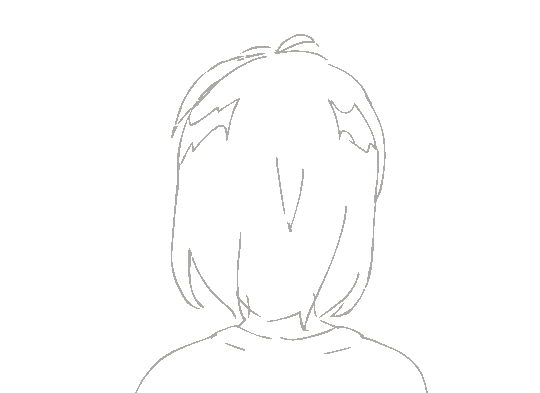1.Next.Js介绍
1.1 next.js是什么
next.js作为一款轻量级的应用框架,主要用于构建静态网站和后端渲染网站。
Next.js 只支持React 16.
由于我们使用 React 16 的特性,所以不得不放弃对 React 15 以及以下版本的支持. 当前译版为7.0.0-canary.8
1.2 框架特点
- 使用后端渲染
- 自动进行代码分割(code splitting),以获得更快的网页加载速度
- 简洁的前端路由实现
- 使用webpack进行构建,支持模块热更新(Hot Module Replacement)
- 可与主流Node服务器进行对接(如express)
- 可自定义babel和webpack的配置
2.Next项目创建
2.1 安装create-next-app脚手架
https://create-next-app.js.org/get-started-with-examples
1
2
3
4
5
| yarn global add create-next-app@9.5.0
create-next-app my-project
cd my-project
yarn dev
|

2.2 添加antd
安装antd和按需加载的babel-plugin-import。
1
2
3
4
5
| yarn add antd@3.9.2 babel-plugin-import
yarn add @zeit/next-css @zeit/next-less less
yarn add babel-plugin-module-resolver
yarn add next-compose-plugins
|
跟目录下建立.babelrc
1
2
3
4
5
6
7
8
9
10
11
12
13
14
15
16
17
18
19
20
21
| {
"presets": ["next/babel"],
"plugins": [
[
"module-resolver",
{
"alias": {
"@": "./"
}
}
],
[
"import",
{
"libraryName": "antd",
"style": "css"
}
]
]
}
|
根目录有个next.config.js,专门用来修改next以及webpack的配置。更改如下:
1
2
3
4
5
6
7
8
9
10
11
12
13
14
15
16
17
18
19
20
21
22
23
24
25
26
27
28
29
30
31
32
33
34
35
36
37
38
39
40
41
42
|
const withCss = require('@zeit/next-css')
const withLess = require('@zeit/next-less')
const withPlugins = require("next-compose-plugins");
const style = [
[withCss, {
}],
[withLess, {
}],
]
module.exports = withPlugins([...style],{
distDir: 'dist',
webpack: (config, { isServer }) => {
if (isServer) {
const antStyles = /antd\/.*?\/style\/css.*?/
const origExternals = [...config.externals]
config.externals = [
(context, request, callback) => {
if (request.match(antStyles)) return callback()
if (typeof origExternals[0] === 'function') {
origExternals[0](context, request, callback)
} else {
callback()
}
},
...(typeof origExternals[0] === 'function' ? [] : origExternals),
]
config.module.rules.unshift({
test: antStyles,
use: 'null-loader',
})
}
return config
},
})
|
2.3 使用antd组件
1
2
3
4
5
6
7
8
9
10
| #pages/index.js
import { Button } from 'antd';
import { Pagination } from 'antd';
const Home = () => (
<div className="container">
<Button type="primary">Primary</Button>
<Pagination defaultCurrent={1} total={50} />
.........
|
2.4 使用less
1
2
3
4
5
6
7
8
9
10
11
12
13
14
15
16
17
18
19
20
21
22
23
24
25
26
27
28
| #1. 编写index.less
.title{
text-align: center;
font-size: 30px;
}
#2.在pages目录下新建typing.d.ts
declare module 'slash2';
declare module '*.css';
declare module '*.less';
declare module '*.scss';
declare module '*.sass';
declare module '*.svg';
declare module '*.png';
declare module '*.jpg';
declare module '*.jpeg';
declare module '*.gif';
declare module '*.bmp';
declare module '*.tiff';
declare module 'omit.js';
#3.index.tsx中使用less
import './index.less'
#4.给less开启模块化 修改nuxt.config.js
[withLess, {
cssModules: true
}],
|
3.Next基本使用
3.1 创建视图
pages目录下新建about.tsx
1
2
3
4
5
6
7
8
9
10
11
12
13
14
15
16
| import Link from 'next/link'
import Layout from '../components/Layout'
const AboutPage = () => (
<Layout title="About | Next.js + TypeScript Example">
<h1>About</h1>
<p>This is the about page</p>
<p>
<Link href="/">
<a>Go home</a>
</Link>
</p>
</Layout>
)
export default AboutPage
|
浏览器访问:http://localhost:3000/about
Next.js 没有路由配置文件,路由的规则跟 PHP 有点像。只要在 pages 文件夹下创建的文件,都会默认生成以文件名命名的路由
3.2 页面跳转和路由参数
我们可以使用传统的a标签在页面之间进行跳转,但每跳转一次,都需要去服务端请求一次。为了增加页面的访问速度,推荐使用next/link组件进行跳转。将 index.js 改写:
1
2
3
4
5
6
7
8
9
10
11
12
| import { Button } from 'antd';
import { Pagination } from 'antd';
import Link from 'next/link'
const Home = () => (
<div className="container">
<Button type="primary">Primary</Button>
<Pagination defaultCurrent={1} total={50} />
<Link href="/about">
<a>About Page</a>
</Link>
.........
|
Link标签支持任意react组件作为其子元素,不一定要用a标签,只要该子元素能响应onClick事件,就像下面这样:
1
2
3
| <Link href="/about">
<div>Go about page</div>
</Link>
|
Link标签不支持添加style和className等属性,如果要给链接增加样式,需要在子元素上添加:
1
2
3
| <Link href="/about">
<a className="about-link" style={{color:'#ff0000'}}>Go about page</a>
</Link>
|
3.3 路由传参
如果需要给路由传参数,则使用query string的形式,将 index.tsx 改写:
1
2
3
4
5
6
7
8
9
10
11
12
13
14
15
16
17
18
19
20
21
22
23
24
25
26
27
28
29
30
31
32
33
34
35
36
37
| import Link from 'next/link'
import Layout from '../components/Layout'
import { Button } from 'antd';
import { Pagination } from 'antd';
import styles from './index.less'
console.log(styles)
const PostLink = (props:any) => (
<li>
{/* <Link href={`/about?title=${props.title}`}>
<a>{props.title}</a>
</Link> */}
<Link href={{ pathname: '/about', query: { title: props.title } }}>
<a>{props.title}</a>
</Link>
</li>
);
const IndexPage = () => (
<Layout title="Home | Next.js + TypeScript Example">
<h1 className="title">Hello Next.js 👋</h1>
<Button type="primary" href="">Primary</Button>
<Pagination defaultCurrent={1} total={50} />
<Link href="/about?title=hello">
<a>About Page</a>
</Link>
<ul>
<PostLink title="Hello next.js" />
<PostLink title="next.js is awesome" />
<PostLink title="Deploy apps with Zeit" />
</ul>
</Layout>
)
export default IndexPage
|
取参数的时候,需要借助框架提供的withRouter方法,参数封装在 query 对象中,将 about.tsx 改写:
1
2
3
4
5
6
7
8
9
10
11
12
13
14
15
16
17
18
19
20
21
| import Link from "next/link";
import Layout from "../components/Layout";
import { withRouter } from "next/router";
import { Button } from 'antd';
const AboutPage = (props: any) => {
var flag = false;
return <Layout title="About | Next.js + TypeScript Example">
<h1>{props.router.query.title}</h1>
这是About页面
{flag && <Button type="primary" href="">Primary</Button>}
<Link href="/">
<a>首页</a>
</Link>
</Layout>
};
export default withRouter(AboutPage);
#注意:这边有个bug,当next和antd结合使用的时候,如果某个页面中没有使用到antd组件,那么这个页面不能被刷新,否则路由导航失效,antd的样式也不会被加载
#因此这边在about页面中使用了Button组件,即使Button组件没有被渲染到页面
|
如果希望浏览器地址栏不显示query string,可以使用Link标签的as属性:
1
2
3
| <Link as="/t/123" href="/about?title=123">
<a>About Page2</a>
</Link>
|
3.4 Layout
所谓的layout就是就是给不同的页面添加相同的header,footer,navbar等通用的部分,同时又不需要写重复的代码。在next.js中可以通过共享某些组件实现layout。
在components目录下创建Layout.tsx
1
2
3
4
5
6
7
8
9
10
11
12
13
14
15
16
17
18
19
20
21
22
23
24
25
26
27
28
29
30
31
32
33
34
35
36
37
38
39
40
41
| import React, { ReactNode } from 'react'
import Link from 'next/link'
import Head from 'next/head'
type Props = {
children?: ReactNode
title?: string
}
const Layout = ({ children, title = 'This is the default title' }: Props) => (
<div>
<Head>
<title>{title}</title>
<meta charSet="utf-8" />
<meta name="viewport" content="initial-scale=1.0, width=device-width" />
</Head>
<header>
<nav>
<Link href="/">
<a>Home</a>
</Link>{' '}
|{' '}
<Link href="/about">
<a>About</a>
</Link>{' '}
|{' '}
<Link href="/users">
<a>Users List</a>
</Link>{' '}
| <a href="/api/users">Users API</a>
</nav>
</header>
{children}
<footer>
<hr />
<span>I'm here to stay (Footer)</span>
</footer>
</div>
)
export default Layout
|
在页面中就可以使用这个Layout布局组件了
1
2
3
4
5
6
7
8
9
10
11
12
13
14
15
16
17
18
| const IndexPage = () => (
<Layout title="Home | Next.js + TypeScript Example">
<h1 className="title">Hello Next.js 👋</h1>
<Button type="primary" href="">Primary</Button>
<Pagination defaultCurrent={1} total={50} />
<Link href="/about?title=hello">
<a>About Page</a>
</Link>
<ul>
<PostLink title="Hello next.js" />
<PostLink title="next.js is awesome" />
<PostLink title="Deploy apps with Zeit" />
</ul>
</Layout>
)
export default IndexPage
|
3.5 动态路由

通过localhost:3000/users/zs 即可访问[id].tsx
通过localhost:3000/users 即可访问index.tsx
4.样式加载
对于React应用,有多种方式可以增加样式。主要分为两种:
- 使用传统CSS文件(包括SASS,Less等)
- 在JS文件中插入CSS
使用传统CSS文件在实际使用中会用到挺多的问题,所以next.js推荐使用第二种方式。next.js内部默认使用styled-jsx框架向js文件中插入CSS。这种方式引入的样式在不同组件之间不会相互影响,甚至父子组件之间都不会相互影响。
4.1 styled-jsx
接下来,我们看一下如何使用styled-jsx。将about.tsx的内容替换如下:
1
2
3
4
5
6
7
8
9
10
11
12
13
14
15
16
17
18
19
20
21
22
23
24
25
26
27
28
29
30
31
32
33
34
35
36
37
38
| import Link from "next/link";
import Layout from "../components/Layout";
import { withRouter } from "next/router";
import { Button } from "antd";
const AboutPage = (props: any) => {
var flag = false;
return (
<Layout title="About | Next.js + TypeScript Example">
<div className="container">
<h1>{props.router.query.title}</h1>
这是About页面
{flag && (
<Button type="primary" href="">
Primary
</Button>
)}
<Link href="/">
<a>首页</a>
</Link>
</div>
<style jsx>
{`
h1 {
background-color: blue;
font-size: 60px;
}
.container {
color: red;
}
`}
</style>
</Layout>
);
};
export default withRouter(AboutPage);
|
如果需要为导航增加样式,需要修改Layout.tsx:
1
2
3
4
5
6
7
8
9
10
11
12
13
14
15
16
17
18
19
20
21
22
23
24
25
26
27
28
29
30
31
32
33
34
35
36
37
38
39
40
41
42
43
44
45
46
47
48
49
50
51
52
53
54
55
56
57
| import React, { ReactNode } from "react";
import Link from "next/link";
import Head from "next/head";
type Props = {
children?: ReactNode;
title?: string;
};
const Layout = ({ children, title = "This is the default title" }: Props) => (
<div>
<Head>
<title>{title}</title>
<meta charSet="utf-8" />
<meta name="viewport" content="initial-scale=1.0, width=device-width" />
</Head>
<header>
<nav>
<Link href="/">
<a>Home</a>
</Link>{" "}
|{" "}
<Link href="/about">
<a>About</a>
</Link>{" "}
|{" "}
<Link href="/users">
<a>Users List</a>
</Link>{" "}
| <a href="/api/users">Users API</a>
</nav>
</header>
{children}
<footer>
<hr />
<span>I'm here to stay (Footer)</span>
</footer>
<style jsx>
{`
a {
color: #ef141f;
font-size: 26px;
line-height: 40px;
text-decoration: none;
padding: 0 10px;
text-transform: uppercase;
}
a:hover {
opacity: 0.8;
}
`}
</style>
</div>
);
export default Layout;
|
4.2 全局样式
当我们需要添加一些全局的样式,比如rest.css或者鼠标悬浮在a标签上时出现下划线,这时候我们只需要在style-jsx标签上增加global关键词就行了,我们在Layout.tsx新增如下样式:
1
2
3
4
5
6
7
| <style jsx global>
{`
a:hover {
text-decoration: underline;
}
`}
</style>
|
4.3 使用Less/Sass/Css等
支持用.css, .scss, .less or .style,需要配置默认文件 next.config.js
下载安装
1
2
3
| yarn add @zeit/next-less less
yarn add @zeit/next-css
yarn add @zeit/next-sass node-sass
|
修改根目录下创建next.config.js
1
2
3
4
5
6
7
8
9
10
11
12
13
14
15
| const withCss = require('@zeit/next-css')
const withLess = require('@zeit/next-less')
const withSass = require("@zeit/next-sass");
const style = [
[withCss, {
}],
[withLess, {
cssModules: true
}],
[withSass,{
}],
]
|
在pages中创建styles.less
1
2
3
4
| @font-size: 50px;
.example {
font-size: @font-size;
}
|
在about.js中使用
1
2
3
| import lessobj from "./styles.less"
<p className={lessobj.example}>pppp</p>
|
5.静态文件服务
5.1 图片的使用
项目中用到的一些静态资源,包括图片、样式文件、字体图标、音频视频等文件都应该放到一个static目录下。
在根目录下新建文件夹叫static。通过代码可以通过/static/来引入相关的静态资源。
1
| <img src="../static/images/timg1.jpg" />
|
5.2 字体图标的使用
从Font AweSome官网下载字体图标(压缩包),然后将里面的fonts和css文件夹拷贝到项目static目录下
https://fontawesome.dashgame.com/

安装next-fonts和next-images
1
2
| yarn add next-fonts@1.0.3
yarn add next-images@1.3.1
|
在next.config.js中进行配置
1
2
3
4
5
6
7
8
9
10
11
12
13
14
15
16
17
18
19
20
21
22
23
24
25
26
|
const withCss = require('@zeit/next-css')
const withLess = require('@zeit/next-less')
const withSass = require("@zeit/next-sass");
const withFonts = require('next-fonts')
const withImages = require('next-images')
const withPlugins = require("next-compose-plugins");
const style = [
[withCss, {
}],
[withLess, {
cssModules: true
}],
[withSass,{
}],
[withFonts, {
}],
[withImages, {
}],
]
|
在about.js中使用字体图标
1
2
3
| import '@/static/css/font-awesome.css'
<span className="fa fa-star">字体图标</span>
|
6.Next的SSR
6.1 SSR介绍
服务器端渲染(SSR: Server Side Rendering),react前端做好的界面,后台把界面渲染成html之后,在传给前台。
好处:
1.SEO优化
2.加快首屏渲染速度
6.2 远程数据获取
Next.js提供了一个标准的获取远程数据的接口:getInitialProps,通过getInitialProps我们可以获取到远程数据并赋值给页面的props。getInitialProps即可以用在服务端也可以用在前端。
首先,我们安装isomorphic-unfetch,它是基于fetch实现的一个网络请求库:
1
| yarn add isomorphic-unfetch
|
6.2.1 无状态组件定义getInitialProps
新建home.tsx,然后我们修改home.tsx如下:
1
2
3
4
5
6
7
8
9
10
11
12
13
14
15
16
17
18
19
20
21
22
23
24
25
26
27
28
29
30
31
32
33
34
35
36
37
| import { Button } from "antd";
import Layout from "../components/Layout";
import fetch from "isomorphic-unfetch";
type IProps = {
shows:
{
show: {
id: number;
name: string;
};
}[]
};
const Home = (props: IProps) => {
return (
<Layout>
<h1>Marvel TV Shows</h1>
<ul>
{props.shows.map(({ show }) => {
return <li key={show.id}>{show.name}</li>;
})}
</ul>
<Button>按钮</Button>
</Layout>
);
};
Home.getInitialProps = async function() {
const res = await fetch("https://api.tvmaze.com/search/shows?q=marvel");
const data = await res.json();
return {
shows: data,
};
};
export default Home;
|
6.2.2 有状态组件定义getInitialProps
新建user.tsx,修改内容如下:
1
2
3
4
5
6
7
8
9
10
11
12
13
14
15
16
17
18
19
20
21
22
23
| import Layout from '@/components/layout';
import React from 'react'
import fetch from 'isomorphic-unfetch';
export default class extends React.Component {
static async getInitialProps(context) {
const id = 43519;
const res = await fetch(`https://api.tvmaze.com/shows/${id}`);
const show = await res.json();
return { show };
}
render() {
var html = this.props.show.summary;
return (
<Layout>
<h1>{this.props.show.name}</h1>
<div>{this.props.show.summary}</div>
<img src={this.props.show.image.medium} />
</Layout>
)
}
}
|
6.3 getInitialProps的原理
当页面渲染时加载数据,我们使用了一个异步方法getInitialProps。它能异步获取数据,并绑定在组件的props上。
getInitialProps()能够在服务的运行,也能够在client运行。当页面第一次加载时,服务器收到请求,getInitialProps()会执行,getInitialProps()返回的数据,会序列化后添加到 window.__NEXT_DATA__.props上,写入HTML源码里,类似于<script>window.__NEXT_DATA__={props:{xxx}}</script>。这样服务端的getInitialProps()就实现了把数据传送给了客户端。
客户端的收到了HTML源码,有了数据,想做什么都可以。比如可以拿着window.__NEXT_DATA__.props的数据来初始化React组件的props属性。具体过程如下:
当页面是用户通过超链接跳转过去,而不是用户输入网址或刷新来访问的,这时候是纯客户端的行为,没有HTTP请求发出去。用户如果通过超链接跳转回这个页面,客户端的getInitialProps()开始起作用了,它会自动读取HTML源码里 window.NEXT_DATA.props里的数据并作为React组件的props。
当页面初次加载或者刷新页面时,getInitialProps只会加载在服务端。只有当路由跳转时,客户端才会执行getInitialProps。
注意:getInitialProps将不能使用在子组件中。只能使用在pages页面中。
6.4 getInitialProps的入参
Next对React组件的getInitialProps生命周期方法做了改造,传入一个上下文对象,该对象在服务端渲染和客户端渲染时,具有不同的属性:
- req: HTTP请求对象(服务端渲染独有)
- res: HTTP响应对象(服务端渲染独有)
- pathname: URL中的路径部分
- query:URL中的查询字符串部分解析出的对象
- err:错误对象,如果在渲染时发生了错误
- xhr:XMLHttpRequest对象(客户端渲染独有)
7.后台mock
1
2
3
4
| pages/api中可以写mock接口
page/api/city/index.ts 通过localhost:3000/api/city即可访问该接口
page/api/city/[name].ts 通过localhost:3000/api/city/wuxi即可访问该接口
|
1
2
3
4
5
6
7
8
9
10
11
12
13
|
import { NextApiRequest, NextApiResponse } from 'next'
const handler = (_req: NextApiRequest, res: NextApiResponse) => {
try {
res.status(200).json(['南京','无锡'])
} catch (err) {
res.status(500).json({ statusCode: 500, message: err.message })
}
}
export default handler
|








